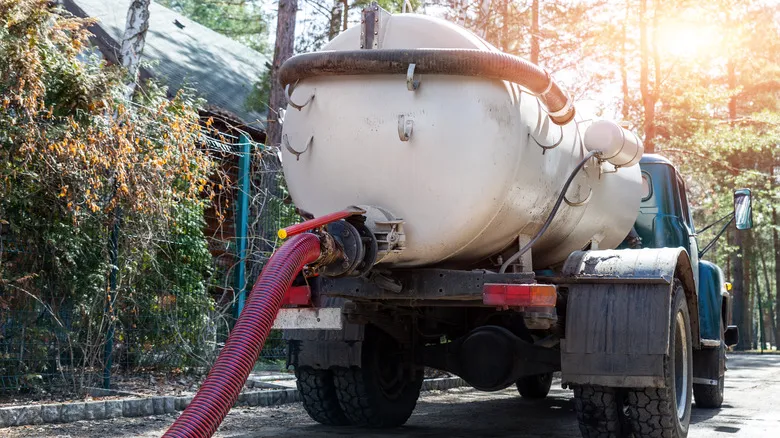Your septic system is a vital, yet often overlooked, component of your home’s wastewater management. To ensure it functions efficiently and lasts for years, understanding its anatomy is essential. This knowledge becomes especially crucial when it comes to proper septic tank pumping, a key aspect of maintenance. In this article, we’ll explore the various components of your septic system and how understanding its anatomy can help you ensure proper pumping.
Section 1: The Components of a Septic System
A septic system is made up of several interconnected components that work together to treat and dispose of household wastewater. Understanding each part is the first step in maintaining your septic system effectively:
1.1 Septic Tank
The septic tank is the primary component of your septic system. It’s typically made of concrete, fiberglass, or plastic and is buried underground. Its main function is to receive, separate, and partially treat wastewater.
Inside the septic tank, three layers form:
- Sludge: Heavier solids sink to the bottom, forming sludge.
- Effluent: Clear liquid in the middle layer, known as effluent, flows into the drain field.
- Scum: Lighter solids and grease float to the top, creating a scum layer.
1.2 Drain Field (Leach Field)
The drain field, also known as the leach field, consists of a network of pipes or trenches buried in soil. Its purpose is to further treat the effluent from the septic tank and disperse it into the ground.
The soil in the drain field acts as a natural filter, purifying the effluent before it rejoins the groundwater.
1.3 Soil
The soil in the drain field plays a crucial role in wastewater treatment. It provides physical filtration and contains beneficial microorganisms that help break down any remaining contaminants in the effluent.
1.4 Pipes and Distribution Box
The pipes in your septic system are responsible for conveying wastewater from your home to the septic tank and then distributing effluent from the tank to the drain field.
A distribution box, often found in gravity-fed systems, evenly disperses effluent to different sections of the drain field.
Section 2: The Importance of Septic Tank Pumping
Now that we’ve covered the components, let’s discuss why septic tank pumping is essential:
2.1 Sludge and Scum Accumulation
Over time, sludge and scum accumulate in the septic tank. If not removed through pumping, these solids can reach a critical level, leading to system overload and potential damage.
2.2 Preventing Drain Field Damage
Excess solids entering the drain field can clog it and cause damage. A damaged drain field can result in sewage backups, foul odors, and costly repairs. Pumping prevents this scenario.
2.3 Maintaining Efficient Waste Decomposition
Regular pumping removes excess solids from the septic tank, allowing the beneficial bacteria to break down organic matter efficiently. This ensures that the treatment process remains effective.
2.4 Extending the Tank’s Lifespan
A septic tank that is regularly pumped and maintained can last for several decades. Neglecting pumping can lead to premature tank failure, necessitating a costly replacement.
Section 3: How to Locate Your Septic System
Before you can understand your septic system’s anatomy and schedule pumping, you need to know where it’s located. Here’s how to find it:
3.1 Look for Documentation
Start by checking your home’s blueprints or any records related to your property. This documentation might include the septic system’s location.
3.2 Check the Yard
Septic tanks are typically buried underground, but there are visible signs in your yard that can help you locate it:
- Grass Density: The grass or vegetation above the septic tank and drain field may be denser and greener due to the nutrients in the effluent.
- Mound or Raised Area: Some older systems have a visible mound or raised area in the yard where the drain field is located.
- Tank Access Cover: The septic tank may have an access cover or manhole cover that can be found if you know its approximate location.
3.3 Consult Professionals
If you can’t locate your septic system, consider hiring a septic service provider or a professional locator to help you find it. They have specialized tools and expertise for this task.
Section 4: Pumping Frequency and Scheduling
Understanding your septic system’s anatomy and knowing its location is just the beginning. You must also be aware of the recommended pumping frequency and how to schedule it:
4.1 Pumping Frequency
The frequency of septic tank pumping depends on several factors, including:
- Tank Size: Larger tanks can hold more waste and may require less frequent pumping.
- Household Size: The number of occupants in your home affects wastewater production. Larger households may require more frequent pumping.
- Water Usage: High water usage, such as excessive laundry or frequent showers, can lead to more wastewater entering the tank, necessitating more frequent pumping.
- Waste Type: The type of waste you dispose of in your septic system can impact pumping frequency. Avoid flushing non-biodegradable items or harsh chemicals.
As a general guideline, experts recommend pumping your septic tank every 3 to 5 years. However, it’s crucial to consult with a professional septic service provider to determine the ideal pumping schedule for your specific system based on these factors.
4.2 Scheduling Pumping
To schedule septic tank pumping, follow these steps:
- Consult Professionals: Contact a professional septic service provider in your area. They will assess your system and recommend a pumping schedule tailored to your specific needs.
- Keep Records: Maintain records of past pumpings and any maintenance performed on your septic system. This helps you track its history and plan future pumpings accordingly.
- Monitor Signs: Pay attention to signs that your septic tank may need pumping sooner, such as slow drains, foul odors, sewage backups, or lush grass over the drain field. If you notice these signs, contact your service provider promptly.
Conclusion
Understanding the anatomy of your septic system is a vital aspect of responsible homeownership. It allows you to appreciate the role each component plays in wastewater treatment and disposal. Moreover, this knowledge empowers you to schedule septic tank pumping effectively, ensuring your system’s longevity and functionality.
Remember that professional septic service providers have the expertise and equipment to perform septic tank pumping safely and efficiently. Consulting with professionals for routine maintenance and pumping is the best way to protect your investment and enjoy trouble-free wastewater management. With this understanding, you can maintain a healthy septic system and contribute to a sustainable home environment.











